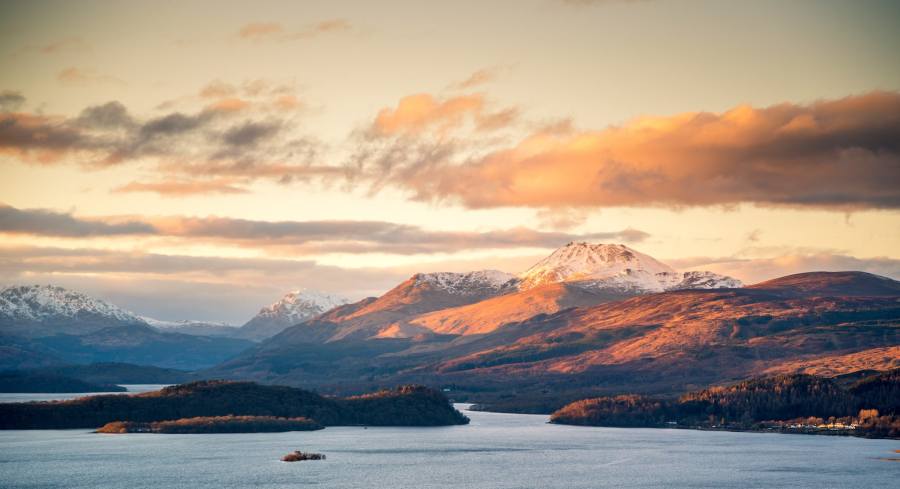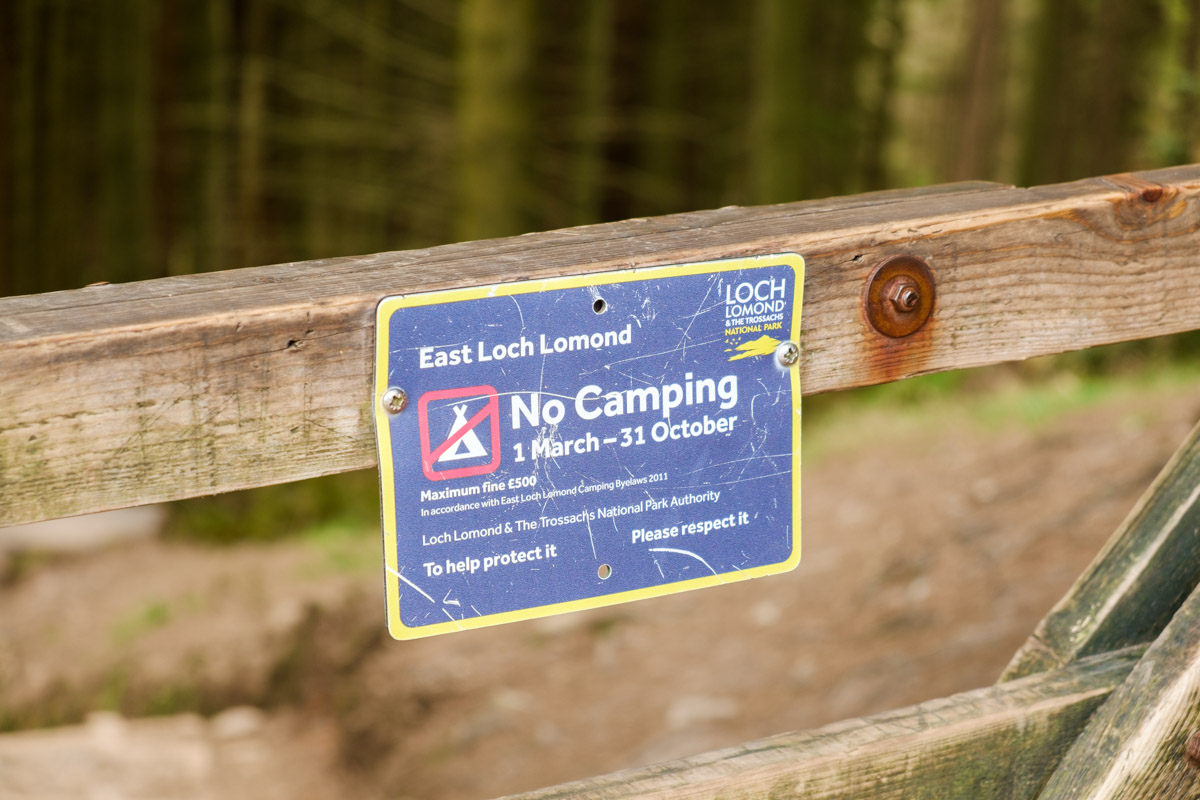A court decision has upheld the fight to defend public access rights – but many remain unhappy with other decisions taken by the National Park
A decision by the Inner House of the Court of Session, the highest civil court in Scotland, upholding public access rights on a private estate in Loch Lomond & the Trossachs National Park, has been strongly welcomed by the Park Authority.
The owner of Drumlean Estate, near Aberfoyle, was unlawfully blocking members of the public from enjoying access rights granted by the Land Reform (Scotland) Act 2003.
Back in 2013, walkers found that access to an area between Ben Venue and Loch Ard was blocked by locked high gates. After ‘repeated attempts’ to resolve the issue with the landowners, Loch Lomond & the National Park Authority issued an enforcement notice to the landowners to remove these barriers to public access.
In late 2015, an initial judgement held that there had not been a breach of the Land Reform (Scotland) Act 2003, and that access rights did not apply to certain parts of the estate. The Park Authority lodged an appeal – had the decision been allowed to stand, it would have set a nasty precedent for access rights.
The appeal was upheld in March 2017, but a further appeal was lodged by the landowner, which has been rejected in the judgement issued today. The full decision is available to read on the Scottish Courts and Tribunals website here.
“Protected and upheld”
Gordon Watson, Chief Executive of the National Park Authority, said: “The National Park Authority strongly believes in its duty to uphold the landmark right to responsible access granted to the public by the Land Reform (Scotland) Act 2003.
“In our role as an Access Authority we work in partnership with communities and land managers across the National Park to ensure public access rights are protected and upheld. The vast majority of landowners within the National Park, from small land holdings to large estates, respect the provisions and responsibilities that come with the Land Reform Act and support our many projects to improve access.
“There has been a significant amount of work over the last five years involved in pursuing this case but it was crucial to do so and ensure that the public can continue to enjoy their access rights within this special landscape in the National Park.
“Today’s decision sets a national precedent and we are pleased that this positive result will be able to be drawn upon by other Access Authorities across the country in the future.
“I am delighted that the expertise, dedication and determination of our Access and Legal teams has resulted in public access rights being confirmed at the Drumlean Estate following today’s decision.”
“Totally rotten”
Not everyone is happy with how the Loch Lomond & the Trossachs National Park Authority is protecting access rights.
A bylaw was recently introduced banning wild camping between March and September within new ‘management zones’, including around 93 miles (150km) of loch shores in popular areas (although wild camping continues to be allowed in other parts of the park). Within the management zones, camping is only allowed in predetermined places – if you pay for a permit. These bylaws were introduced in response to widespread abuse and littering.
“Many of the details I asked about had not been thought through by the Park before they instituted the bylaw. They were winging it.”
As part of Scotland’s world-renowned access legislation, the Land Reform (Scotland) Act 2003 – cited above by the Loch Lomond & the Trossachs National Park Authority – guarantees the right to camp on most unenclosed land (see the Scottish Outdoor Access Code).
Outdoor writers and representation bodies have criticised the bylaw. Ramblers Scotland issued a statement in February 2017, saying that “We believe the park should have tackled any issues with over-use and anti-social behaviour by investing in low-cost campsites and enforcing existing laws”.
Brendan Paddy, Director of Ramblers Scotland, said, “We’re disappointed that the park is going ahead with this plan. It undermines Scottish access rights by providing too few tent pitches to cope with demand and by charging to camp in previously-free areas. Campers often won’t get any toilets, drinking water or bins in return – and we fear the hassle, cost and insufficient number of permits may put people off visiting this wonderful area.”
TGO writer David Lintern probed the process for tackling wild campers in management zones directly, and found the response confused and disorganised. He has recently written about it on his blog (which includes a full record of communications obtained by a Freedom of Information Act request). David says, “Many of the details I asked about had not been thought through by the Park before they instituted the bylaw. They were winging it. That doesn’t seem a very responsible thing to do to your employees on the ground, never mind to the general public.”
Further details can be found on the excellent blog Parkswatch Scotland. Nick Kempe writes: “The permit systems [sic] is totally rotten and needs to go”.
In response, Gordon Watson, Chief Executive of Loch Lomond & the Trossachs National Park, said: “The seasonal bylaws operate between March and September and were introduced to protect some of the Park’s most popular and easily accessible lochshores from damage caused by antisocial behaviour from some campers going back many years but also the impact on the environment caused by the sheer high volume of visitors to these areas.
“Camping is still very much promoted in these areas and the feedback we’ve had from those who came to camp in the new permit areas and new campsite at Loch Chon in 2017 was overwhelmingly positive with over 85% recommending the experience.
“We actively encourage and welcome responsible wild camping where access rights apply in the remaining 96% of the Park’s 720sq miles all year round. The role of the National Park Authority is to both provide opportunities for people to enjoy and experience the fantastic recreation opportunities on offer here and to protect this special landscape for future generations. That can be a challenge but we feel that the camping byelaws and associated camping provision being created through the permit areas and new campsites are striking that balance.”
The situation with wild camping in the Loch Lomond & the Trossachs National Park remains fluid and complex. While we welcome the Park Authority’s impassioned fight for access rights in the Drumlean Estate, we hope that the legal activities of genuine wild campers – who are often rigorous in their attempts to leave no trace – can coexist with the increasing pressures of tourism, and the need for the Park Authority to control littering and other anti-social behaviour.
Header image © Ross Elliott Photo / Shutterstock









